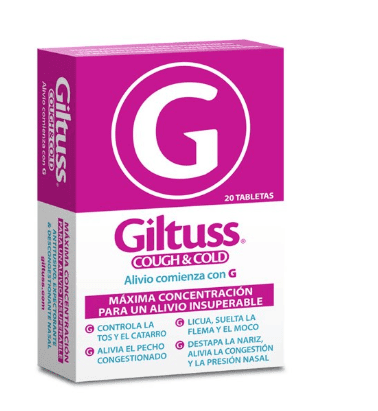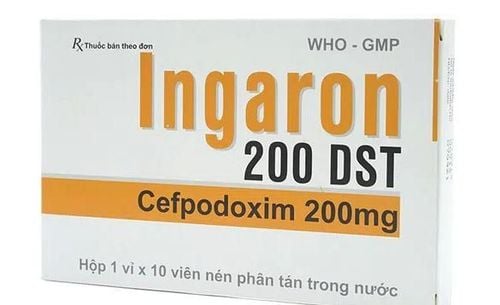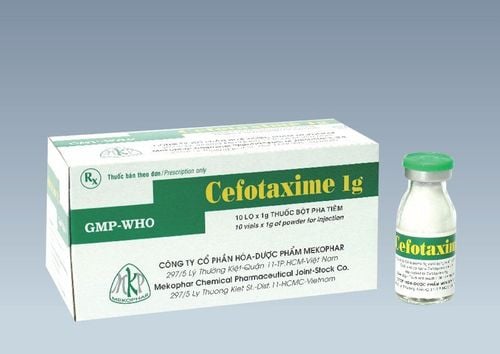This is an automatically translated article.
Fiosaxim 100 is a drug commonly used in the treatment of otitis media, pharyngitis, bronchitis, acute and chronic pneumonia. The drug is also used in the treatment of urinary - genital infections, gonorrhea, skin and soft tissue when prescribed by a specialist.
1. How does Cefixim 100 work?
Fiosaxim 100 contains the main ingredient is Cefixim 100mg. This is an antibiotic belonging to the 3rd generation Cephalosporin group, commonly used in the treatment of infections caused by bacteria. Basically, the bactericidal mechanism of Cefixim is similar to that of other cephalosporins, binding to target proteins (penicillin-binding proteins) to inhibit the synthesis of mucopeptides in the bacterial cell wall.
2. Indications and contraindications Cefixim 100
2.1. Indications for use of Fiosaxim 100 Fiosaxim 100 is usually indicated for use in cases of bacterial infections:
Patients with problems related to the upper and lower respiratory tract such as sinusitis, pharyngitis, pneumonia, bronchitis management ... Patients with urinary and genital tract infections including gonorrhea, pyelonephritis... Patients with diseases related to the digestive tract such as cholecystitis, typhoid. People with problems related to skin and soft tissue infections. 2.2. Contraindications Fiosaxim 100 Fiosaxim 100 is contraindicated in the following cases:
Do not use Fiosaxim 100 for patients with hypersensitivity to Cephalosporin antibiotics, Penicillins or to any ingredient of the drug. Children under 6 months of age absolutely do not use Fiosaxim 100.
3. Dosage and how to use Cefixim 100
Fiosaxim 100 is a drug used orally with a typical treatment duration of 7-14 days.
Adults: Use the usual dose from 200-400mg / day, depending on the degree of infection. Patients can take Fiosaxim 100 1 time or divided into 2 times 12 hours apart. Children: Children over 12 years old or weighing > 50kg can be used according to the adult dose. Meanwhile, for children from 6 months to 12 years old, use the drug at a dose of 8mg/kg/day, taken once or divided into 2 times 12 hours apart. Patients with uncomplicated gonorrhea: Use a single dose of 400mg. Patients with renal impairment: Clearance 21-60 ml/min used at a dose of 300 mg/day. Patients with clearance < 20 ml/min used at a dose of 200 mg/day. Because the active ingredient Cefixime in the drug is not lost through hemodialysis, patients on hemodialysis and peritoneal dialysis do not need to supplement with Fiosaxim 100.
4. Fiosaxim 100 . side effects
When taking Fiosaxim 100, patients may experience some of the following side effects:
Digestive disorders with some common problems such as diarrhea, abdominal pain, nausea, vomiting, flatulence, loss of appetite , pseudomembranous colitis, ... Affects the nervous system causing headaches, dizziness, restlessness, insomnia, fatigue. Signs of hypersensitivity such as erythema, urticaria, fever due to the drug. It is best not to tell your doctor about the side effects you experience when using the drug for timely support.
5. Drug interactions
Fiosaxim 100 has the potential to interact with some of the following drugs:
Co-administration with Probenecid increases the peak concentration and AUC of Fiosaxim 100, reduces renal clearance and the volume of distribution of the drug. Concomitant administration of Fiosaxim 100 with anticoagulants results in an increase in prothrombin time, with or without bleeding. Co-administration with Carbamazepine increases the risk of increased plasma concentrations of Carbamazepine. Using Fiosaxim 100 in combination with Nifedipine will increase the bioavailability of Fiosaxim.
6. Be careful when using Fiosaxim 100
Before using Fiosaxim 100 to treat the disease, the patient should be checked for a history of allergy to Penicillin and other Cephalosporins. Fiosaxim 100 should be used with caution in patients with a history of gastrointestinal disease and colitis, especially during prolonged use because of the risk of overgrowth of resistant bacteria. There are not enough studies to determine the risks of taking Fiosaxim 100 during pregnancy or breast-feeding. Therefore, patients need to consult their doctor carefully to weigh the benefits and risks. Above is some basic information about the drug Fiosaxim 100. You should note that you should only take the drug when prescribed by a doctor, do not buy and use it yourself to avoid side effects and possible dangerous interactions. .
Please dial HOTLINE for more information or register for an appointment HERE. Download MyVinmec app to make appointments faster and to manage your bookings easily.













